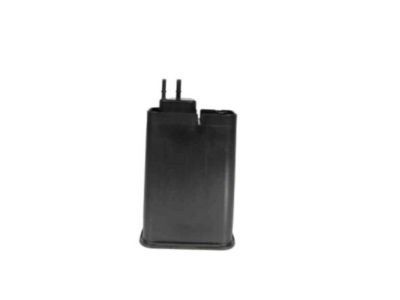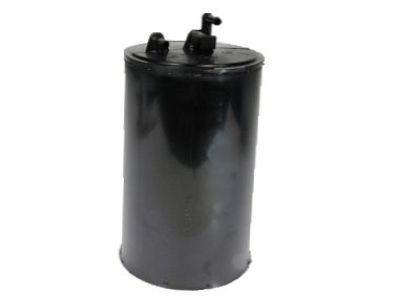
My Garage
My Account
Cart
Genuine Chevrolet K1500 Vapor Canister
Fuel Vapor Canister- Select Vehicle by Model
- Select Vehicle by VIN
Select Vehicle by Model
orMake
Model
Year
Select Vehicle by VIN
For the most accurate results, select vehicle by your VIN (Vehicle Identification Number).
3 Vapor Canisters found
Chevrolet K1500 Canister Asm,Evap Emission
Part Number: 17113330$159.63 MSRP: $287.62You Save: $127.99 (45%)
Chevrolet K1500 Vapor Canister
The Vapor Canister in Chevrolet K1500 series of automobiles is used in the evaporative emissions control system also called the EVAP system with the intention of minimizing or blocking the release of hydrocarbons into the atmosphere. It operates on the principle that, the fuel vapours are stored in a carbon canister having activated charcoal which absorbs such vapours. When the engine is running another valve known as the purge valve opens and a combustible mixture of air and the stored vapors is channeled to the engine to be burnt. In K1500 models, modifications of the Vapor Canister have been applied in the course of its production and some of them possess a filter that can be replaced for the purposes of its proper functioning. New features of the existing OBD II include a canister vent solenoid which provides for diagnosis of the.voltage and different leaks, and fuel tank pressure sensor which has also been used in diagnosing the tank. Such adaptation guarantees that the Vapor Canister cuts emissions while not affecting the performance of the car in any way.
Each OEM Chevrolet K1500 Vapor Canister we offer is competitively priced and comes with the assurance of the manufacturer's warranty for the part. Furthermore, we guarantee the speedy delivery of your orders right to your doorstep. Our hassle-free return policy is also in place for your peace of mind.
Chevrolet K1500 Vapor Canister Parts Questions & Experts Answers
- Q: What is the role of the fuel evaporative emissions control (EVAP) system, Canister Purge Valves, Fuel Pressure Sensor and Vapor Canister on Chevrolet K1500?A:The EVAP system works by letting its charcoal-filled tank take fuel vapors from the tank, then letting the engine pull those vapors into its intake during operation. The EVAP system works when different parts come together: the activated charcoal canister, purge valve, vent valve, pressure sensor, fuel tank, and air release and fuel line connections. The vapor from fuel tank passes through a check valve and vapor tube before going into the charcoal canister, where the activated charcoal holds and traps the vapors. The ECM/PCM makes vapors more available by opening certain valves in certain conditions. The computer control unit controls how vapor passes through by repeatedly switching on the EVAP purge valve solenoid throughout each second according to engine conditions. These newer models use OBD-II technology to test for gas leaks in two ways: by drawing a vacuum on the canister system, and by checking fuel tank pressure to find where liquid is escaping. Just like the MAP Sensor, this fuel tank pressure sensor sends a voltage signal to the PCM to help measure the pressure of air inside the tank. The Federal government guarantees the warranty for the evaporative control system, but most problems start from disconnected or damaged hoses that can be easily checked. When there is no electronic purge control like early models had, you need to examine the charcoal canister along with its components for harm or signs it was incorrectly routed. Late models need someone to examine both fuses and the electrical wiring of these two valves, which stay off unless they're turned on by the Engine Control Module. To fix parts that break on the EVAP canister, you need to clean the connection area before taking it apart, and you must follow separate guidelines depending on which year your car was made.









